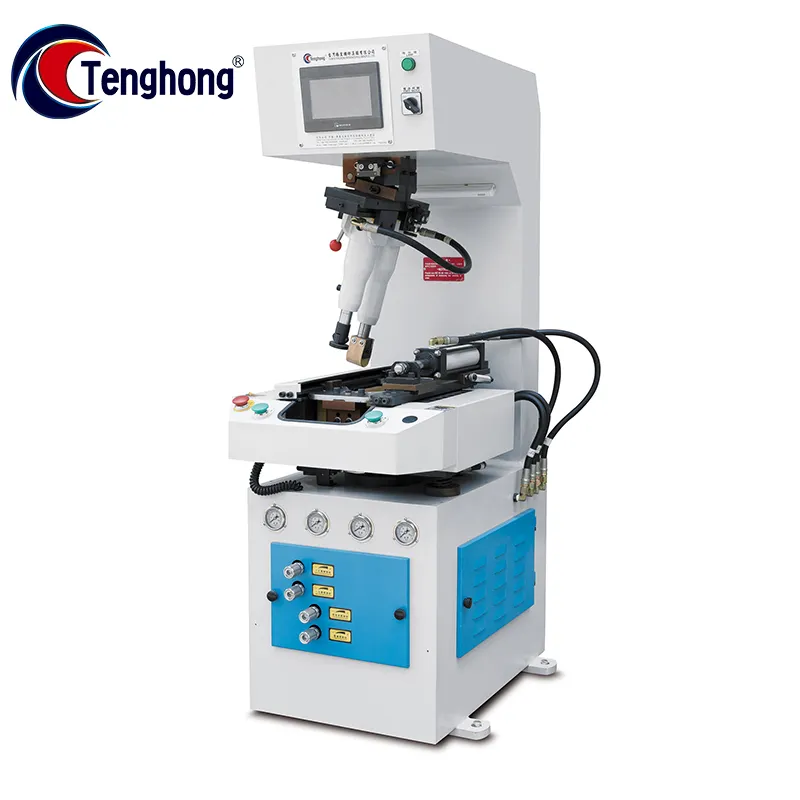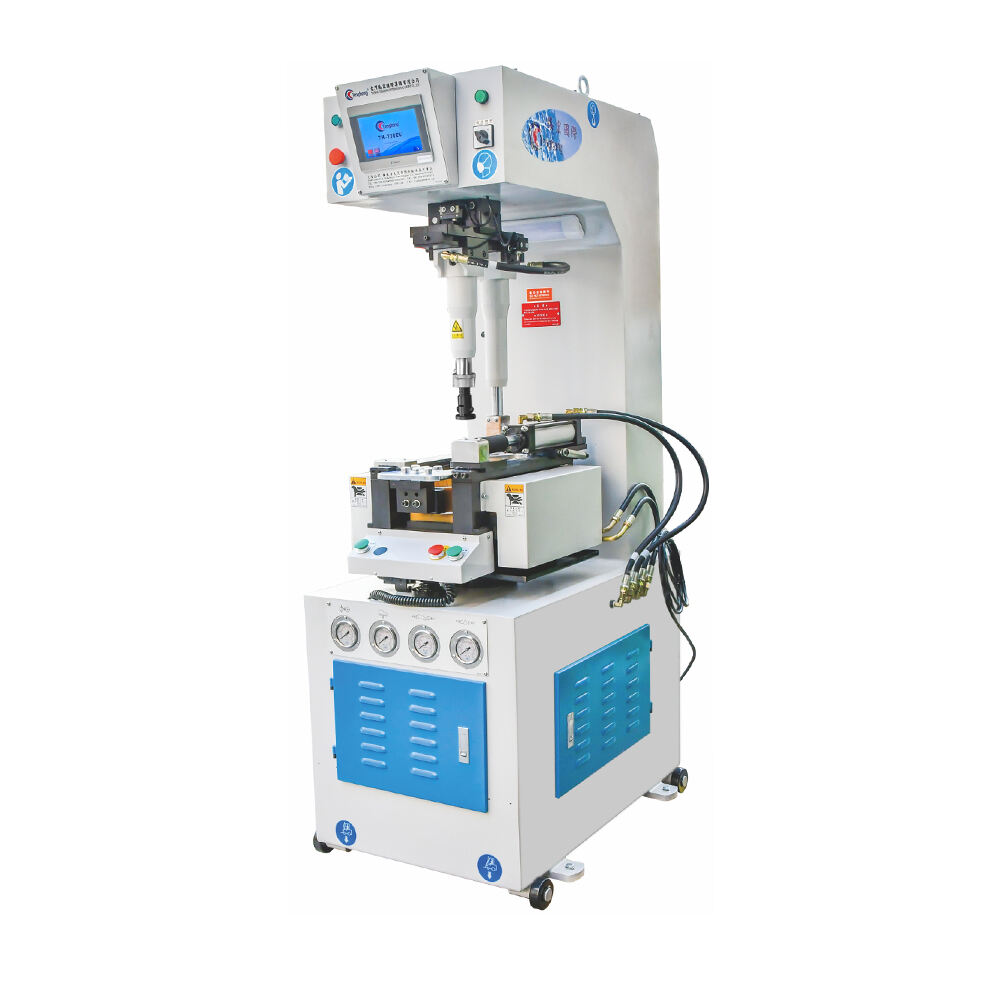Simplified Sole Attachment: Automating Precision in Shoe Assembly Processes
Key Technologies Revolutionizing Shoe Assembly Automation
PLC Control Systems for Precision Operations
PLC systems, or Programmable Logic Controllers, really boost accuracy during shoe assembly because they give such precise control over how machines work. With these controllers, manufacturers can make tiny adjustments throughout the production process which cuts down on mistakes and makes everything run better. Some research shows that when companies switch to PLC systems, their downtime drops quite a bit - maybe around 15% or so according to what I've read. The whole operation becomes much smoother and quicker once these systems are in place. What's interesting is how well PLCs play with other automation tech out there. They hook up easily with different machines and sensors, letting factories collect all sorts of useful data about their operations. This information helps managers keep improving things over time. Shoe makers who install PLCs on their assembly lines often find themselves producing better quality products consistently across batches, which makes sense given all those improvements we just talked about.
Hydraulic Press Mechanisms in Sole Attachment
In shoe factories, hydraulic presses play a key role on the production floor, particularly when attaching soles to upper parts. These machines apply even pressure throughout the sole area, which keeps shoes from coming apart at the seams later on. Unlike older methods requiring workers to manually press soles into place, modern hydraulic systems handle this job automatically and finish it faster too. Factory owners love how these systems crank out hundreds of pairs per hour without breaking a sweat. According to recent industry data, companies using hydraulics see better results overall. Fewer defective shoes hit store shelves since the machines maintain consistent quality standards. Customers get happier with their purchases because they don't end up returning broken pairs as often. For any manufacturer serious about staying competitive in today's market, investing in good hydraulic pressing equipment makes all the difference between profit and loss.
Integration of Vision Systems for Quality Assurance
Advanced imaging tech makes vision systems essential during shoe assembly to maintain quality output. These systems check both raw materials and completed shoes against quality benchmarks while catching flaws fast. When problems get spotted early, it cuts down on wasted materials and helps keep the company's name respected among customers who receive consistently good products. According to studies, businesses that install these systems often see around 30% fewer returns related to quality issues, which obviously boosts profits over time. Real time monitoring gives manufacturers valuable information they need to stay ahead of quality concerns and better meet what customers expect from day to day. Companies investing in such technology not only safeguard their brand image but also gain a stronger foothold in today's tough market competition.
Benefits of Automated Sole Attachment in Footwear Production
Reducing Labor Costs with Shoe Stitch Machines
Shoe stitching machines that run automatically help cut down on labor costs because they reduce the need for so many workers doing things by hand. This means factories can move their people into jobs that actually require thinking rather than just repetitive tasks. The footwear business is changing fast thanks to these new machines, which let companies slash their payroll expenses around 30% or so, which makes a real dent in bottom line profits. Labor savings matter a lot in this sector where competition is fierce and margins are thin. When manufacturers start using automated sewing equipment, they save money on wages but also get products out the door quicker, which means better turnaround times and happier customers who want their shoes sooner rather than later.
Ensuring Consistency in Shoe Making Processes
Standardized manufacturing processes become possible through automation, something that helps keep quality consistent and designs intact. Manual approaches tend to hit about 70% consistency most of the time, while automated footwear manufacturing gets closer to 95% consistency according to industry reports. For companies trying to maintain their standing in competitive markets, this kind of reliability matters a lot. With automated systems in place, manufacturers can copy proven designs from one batch to another without losing track of what works. Production managers find this particularly helpful when running multiple shifts or scaling up operations, since it keeps product quality stable even as output increases. Consumers simply expect shoes to look and perform the same whether they buy them today or six months from now.
Scalability for High-Volume Manufacturing
Sole attachment tech that's automated really boosts scalability for shoe makers. When demand spikes, they can ramp up production fast without breaking the bank on costs. Companies that switch to modular production setups often see their output jump around 40% compared to old school methods. What makes this possible? Automation gives manufacturers the flexibility to pivot when new trends hit or when orders change last minute. Shoe factories stay running smoothly even during busy seasons, which puts them ahead of competitors in an industry where fashion changes faster than ever these days.
TengHong Machinery's Advanced Sole Attaching Solutions
TH-710D PLC Control Heavy-Duty Walled Sole Attacher
The TH-710D from TengHong Machinery stands out with its solid build quality that handles tough production requirements day after day without breaking down. Many users point to this machine's strength when talking about their shop floor experiences, noting how reliable it stays even during long shifts. What really catches attention though is the speed factor. The machine can crank out around 120 pairs of footwear every single hour, which means factories can boost output substantially compared to older models. For businesses operating in the fast paced world of shoe manufacturing where downtime costs money, having something dependable like the TH-710D makes all the difference between meeting quotas and falling behind competitors.

TH-710E Double Station Automation for Diverse Shoe Types
With its dual station automation setup, the TH-710E offers real flexibility on the production floor, allowing workers to process different kinds of shoes at once without switching between machines. What makes this machine stand out is how it cuts down waiting periods significantly, sometimes cutting lead times nearly in half compared to traditional methods. For companies trying to keep up with what's hot in footwear right now, this kind of speed matters a lot. The system handles all sorts of designs efficiently too, so there's not much wasted time when changing from one style to another. That means shoe factories can respond faster to what customers want while still keeping costs under control across their diverse product lines.

TH-710EU Compact PLC System for Space-Efficient Factories
The TH-710EU works wonders in tight spaces where every inch counts. Built specifically for facilities dealing with limited room, this equipment maximizes what little floor area is available. Some users say their shop layouts became about 20 percent more efficient after installing these units. What makes it stand out? Even though it takes up less space than standard models, the TH-710EU keeps pace with bigger machines when it comes to actual work done. The real takeaway here is that smart design doesn't mean sacrificing power just because there's less physical space involved.

Future Trends in Automated Shoe Manufacturing
AI-Driven Adaptive Shoe Polishing Systems
The introduction of AI powered polishing systems is changing how shoes get made, bringing real benefits when it comes to flexibility and getting things done faster. What makes these systems special is their ability to handle all sorts of materials and finish types without missing a beat, so quality stays pretty much the same no matter what kind of shoes are coming down the line. Most people working in the industry think we'll see these AI tools becoming standard practice pretty soon, mainly because they cut down on the need for hand polishing which has always been a pain point for manufacturers trying to keep quality consistent across batches. Companies that switch to this tech report saving quite a bit on resources too since the machines figure out exactly how much polish needs applying where. For many factories, this means better bottom lines while still meeting those green manufacturing goals that have become so important lately.
Sustainable Material Handling in Footwear Assembly
Sustainable practices are really taking off in the footwear business these days, especially with new automated systems that work with eco-friendly materials at the forefront of this change. Market research shows companies going green actually gain an advantage because people who care about the environment tend to buy their products instead. Some estimates say that better material handling systems might cut down on waste by as much as 40 percent over time. That kind of reduction speaks volumes about how serious the industry is about cutting back on environmental damage, something we're seeing across many different sectors worldwide. Looking ahead, these tech advancements will likely become even more important for shoe makers wanting to stay relevant as consumer preferences keep shifting toward greener options.

